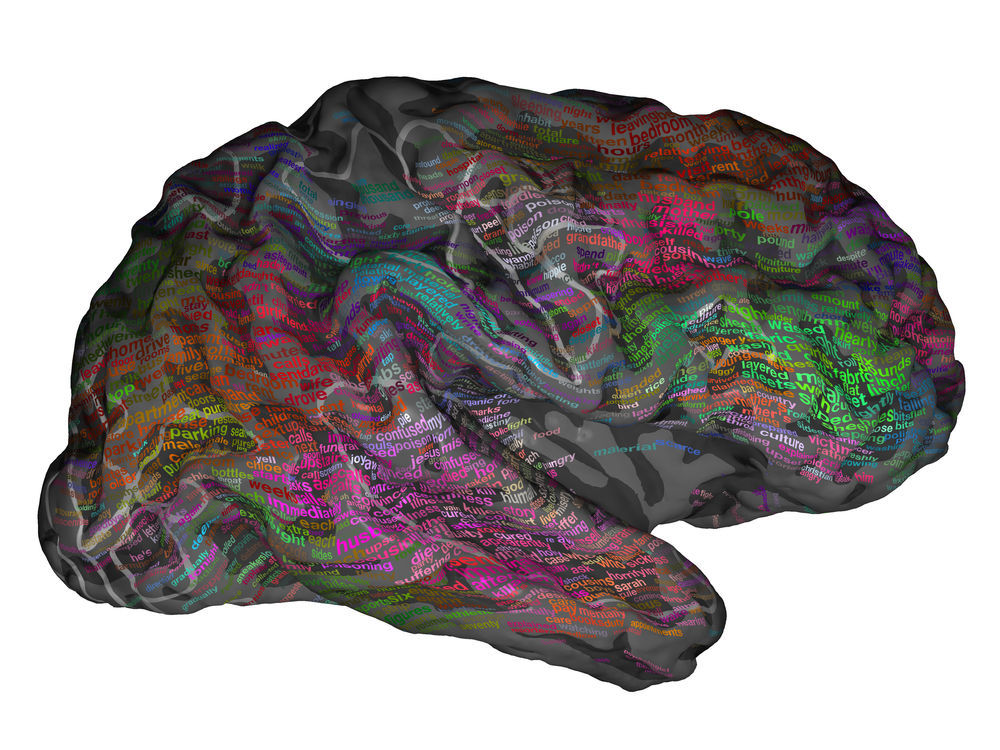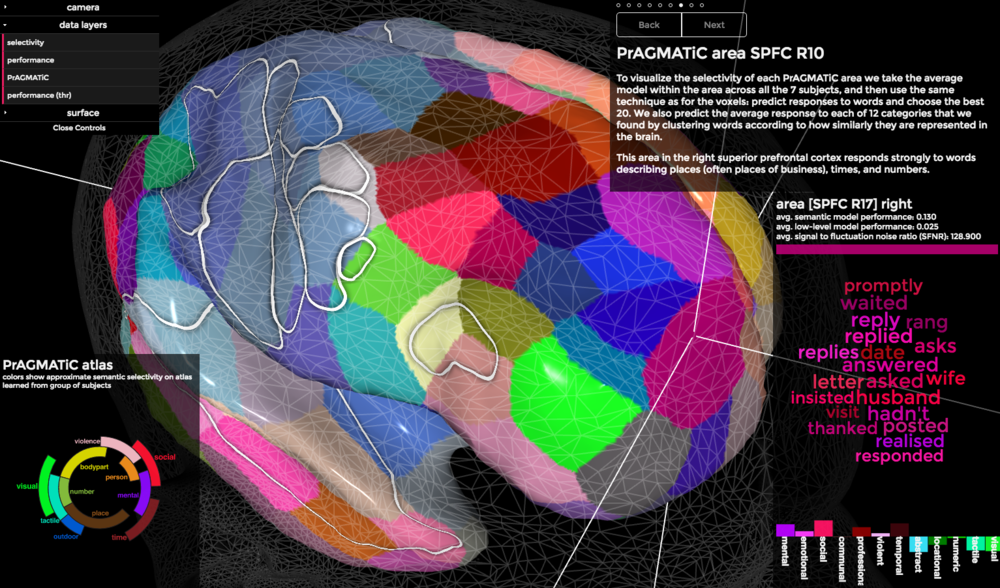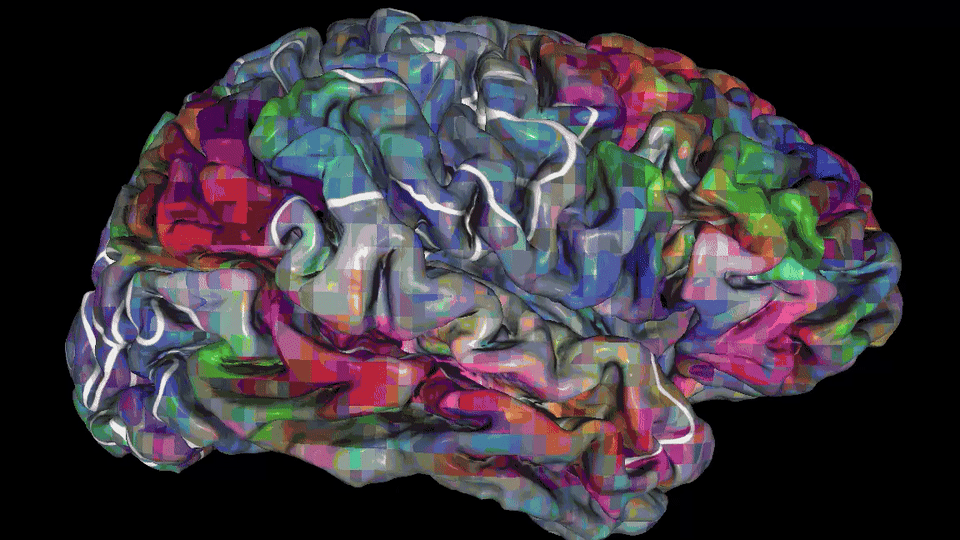Reading thoughts became closer to reality
Created a map of brain areas that are responsible for understanding different words

A group of neuroscientists from the University of California at Berkeley for the first time in the world has compiled a “semantic atlas” of the cerebral cortex . It not only shows where exactly the meanings of various words are processed, but also demonstrates that semantic word processing involves vast areas of the brain, and not just certain areas in the left hemisphere.
From previous studies it was known that the same parts of the brain are activated by processing different words of the same semantic group.
The authors of the new scientific work went further. Using functional magnetic resonance imaging, they studied the brain activity of seven volunteers while listening to a large fusion text, rather than individual words and phrases, as in previous studies. For several hours, the brain activity of each volunteer was recorded in the MRI machine. Such a long and detailed study made it possible to reveal in detail which specific areas of the brain are activated and at what point.
')
Scientists were able to determine which parts of the brain are responsible for processing words related to numbers, visual images, social phenomena, various professions, emotions, people, geographic objects, etc. A total of 12 thematic categories were identified, which turned out to be very similar among all participants in the experiment. For example, the lateral parietal cortex is responsible for the meaning of words associated with people, and the areas around it - for processing numbers and words associated with visual images.

According to some experts , this is a big step towards real reading of thoughts.
“Our semantic models well predict how large regions of the cortex react to the sounds of the language. Moreover, now we can get more specific information that allows us to determine which regions of the brain are responsible for the representation of a particular word. That is why we believe that this technology has enormous potential, ”said Alex Huth from the University of California at Berkeley.
Combining the results of brain scans of seven people using statistical modeling, scientists compiled a three-dimensional atlas of the brain. An interactive version of the atlas is posted here .

Depending on the meaning of the words, their processing involves one or more of the 100 separate sections of the cerebral cortex in both hemispheres.
According to scientists, with the help of advanced brain scanners, for example, people who have survived a stroke can communicate their thoughts and desires to others, even if their damaged brain does not allow them to control their speech apparatus.
Semantic Atlas will help in the study of various diseases associated with brain damage. It will become clearer how such diseases affect speech and speech understanding.
In addition, the atlas allows you to approximately understand the scans of the brain that a person reads, what text hears and thinks about.
It is too early to talk about some kind of "universal language map" in the cerebral cortex, because the scan was performed on only seven volunteers. In addition, all of them are native English speakers and received speech information in the same way, through a speech synthesizer. In the future, scientists will expand the scope of the experiment and check whether the brain's processing of word meanings is different for people of different cultures, when reading instead of listening to the text, and also for people in an altered state of consciousness .
The scientific work was published on April 27, 2016 in the journal Nature (doi: 10.1038 / nature17637; pdf ).
Source: https://habr.com/ru/post/393439/
All Articles